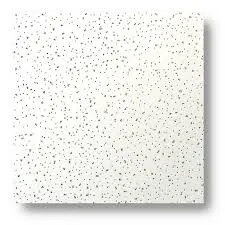- Afrikaans
- Albanian
- Amharic
- Arabic
- Armenian
- Azerbaijani
- Basque
- Belarusian
- Bengali
- Bosnian
- Bulgarian
- Catalan
- Cebuano
- Corsican
- Croatian
- Czech
- Danish
- Dutch
- English
- Esperanto
- Estonian
- French
- German
- Greek
- Hindi
- Indonesian
- irish
- Italian
- Japanese
- Korean
- Lao
- Malay
- Myanmar
- Norwegian
- Norwegian
- Polish
- Portuguese
- Romanian
- Russian
- Serbian
- Spanish
- Swedish
- Thai
- Turkish
- Ukrainian
- Uzbek
- Vietnamese
Nov . 07, 2024 07:36 Back to list
Innovative Solutions for Suspended Ceiling Tees and Design Enhancements
Understanding Suspended Ceiling Tees A Comprehensive Guide
Suspended ceiling tees are integral components in the construction and design of suspended ceilings, which play a crucial role in modern architectural applications. These systems have gained popularity in residential, commercial, and industrial settings due to their aesthetic appeal and functional benefits. In this article, we will explore what suspended ceiling tees are, their various types, their applications, and the benefits they offer.
What are Suspended Ceiling Tees?
Suspended ceiling tees are metal or lightweight synthetic materials that are used to support the panels of suspended ceilings. The term tee comes from the T-shaped connectors that are used to form a grid layout, providing a strong framework that supports the ceiling tiles or panels. This grid system allows for quick installation and maintenance, as it creates an accessible space above the ceiling for plumbing, electrical wiring, and HVAC systems.
Types of Suspended Ceiling Tees
There are several types of suspended ceiling tees available in the market, each designed for specific applications and aesthetic preferences. The most common types include
1. Main Tees These are the primary supports that are installed in the longest direction of the room. They are usually longer and are typically spaced at 4-foot intervals.
2. Cross Tees These tees run perpendicular to the main tees and are used to create the grid pattern that holds the ceiling tiles. They are usually shorter than main tees and are crucial for dividing the grid into sections that can accommodate various tile sizes.
3. Wall Moulding This is an edge trim that helps finish the installation by providing a clean transition between the ceiling and the walls. It can also help in holding the main tees securely.
4. L-O-Mold Used in areas where a flat ceiling meets a sloped surface, L-O-Mold helps transition between different ceiling types while maintaining a finished look.
Applications of Suspended Ceiling Tees
Suspended ceiling tees are widely used in a variety of settings. Their versatility allows them to be adapted for different environments, such as
suspended ceiling tees

- Commercial Spaces In offices, retail shops, and malls, suspended ceilings offer acoustic control, allowing for sound management in busy environments.
- Educational Institutions Classrooms and auditoriums benefit from the soundproofing and aesthetic qualities provided by suspended ceilings
.- Healthcare Facilities Hospitals and clinics utilize these ceilings for their ease of access to overhead systems, allowing for quick repairs and maintenance while maintaining a clean environment.
- Industrial Spaces Warehouses and factories can also benefit from suspended ceilings, as they help in organizing utilities and improving lighting efficiency while providing insulation.
Benefits of Suspended Ceiling Tees
The use of suspended ceiling tees comes with many advantages
1. Aesthetic Flexibility They allow for a variety of finishes, colors, and textures, making it easier to create a cohesive design within a space.
2. Acoustic Control Suspended ceilings can improve the sound quality of a room by dampening noise levels, making them ideal for offices and schools.
3. Access to Utilities With a suspended ceiling, it's easier to access electrical wiring, plumbing, and HVAC systems without significant disruption to the space.
4. Energy Efficiency Installing energy-efficient lighting within a suspended ceiling can help reduce overall energy consumption.
5. Improved Insulation These ceilings also offer additional thermal insulation, contributing to a building's energy efficiency and comfort.
In conclusion, suspended ceiling tees are essential for creating functional, aesthetically pleasing spaces. Understanding their types and applications can greatly enhance the design and utility of both residential and commercial environments. As construction technologies continue to evolve, the versatility and benefits of suspended ceilings, supported by quality tees, will undoubtedly remain integral to modern architecture.
-
Transform Interiors with PVC Gypsum Ceiling: A Stylish, Durable, and Moisture-Resistant SolutionNewsMay.19,2025
-
The Smart Interior Upgrade: Discover the Durability and Versatility of Gypsum Ceiling Access Panel SolutionsNewsMay.19,2025
-
The Smart Choice for Interior Design: Discover the Value of PVC Gypsum Ceiling SolutionsNewsMay.19,2025
-
Mineral Fiber Ceiling Tiles: The Smart Blend of Performance and AestheticsNewsMay.19,2025
-
Mineral Fiber Ceiling Tiles: The Superior Choice Over Gypsum for Sound and Fire SafetyNewsMay.19,2025
-
Mineral Fiber Ceiling Tiles: Eco-Friendly Strength and Style for Every CeilingNewsMay.19,2025







